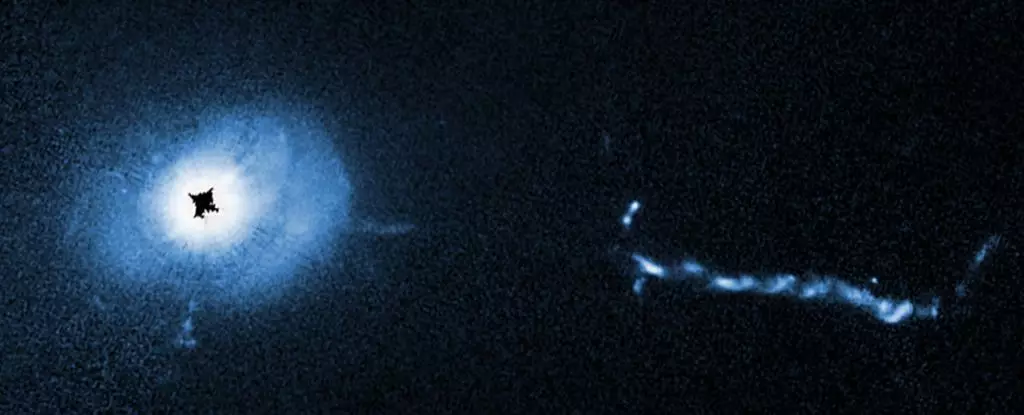Quasars, or quasi-stellar objects, represent one of the most exhilarating phenomena in the universe. They are powered by supermassive black holes located at the centers of distant galaxies, and they shine with an intensity that rivals entire galaxies. As some of the brightest entities in the universe, quasars emit incredible amounts of energy as matter is funneled toward these black holes. This process generates immense heat and light, allowing astronomers to observe them even from billions of light-years away. One of the most notable among them is 3C 273, a quasar that has recently captured the attention of researchers due to unprecedented observations made with the Hubble Space Telescope.
Located 2.5 billion light-years from Earth, 3C 273 is not the nearest quasar, but it stands out as one of the brightest from our perspective. Its brilliance is equivalent to trillions of suns packed into a remarkably compact area at the heart of its host galaxy. The recent advancements in observational techniques have shed light on this celestial body in ways never before imagined. Astronomers now have the opportunity to delve deeper into its structure and behavior, potentially unlocking mysteries of quasars and their interactions with their host galaxies.
The latest findings regarding 3C 273 were made possible through Hubble’s Space Telescope Imaging System (STIS). This advanced tool effectively functions as a makeshift coronagraph, enabling astronomers to obscure the blinding light emitted from the quasar’s core. This is akin to shielding one’s eyes from an intense flashlight to perceive surrounding details. By minimizing the glare, researchers were able to observe previously hidden structures located within a 16,000-light-year radius of the quasar, culminating in a more intricate understanding of this stellar phenomenon.
Data collected from Hubble has revealed astonishing details regarding the environment surrounding 3C 273. For the first time, astronomers have identified small, enigmatic blobs in this region, possibly indicating satellite galaxies or fragments caught in the gravitational grip of the quasar. Additionally, the observations uncovered a newly detected core jet—a stream of matter expelled from the black hole—and an unclassified L-shaped filament, the nature of which remains a puzzle.
Furthermore, scientists have examined the astrophysical jet produced by the external magnetic fields of the quasar. This jet extends an astonishing 300,000 light-years into the intergalactic medium, providing insights into its movement over a span of 22 years. Notably, the data suggest that this jet’s velocity increases as it travels further away from the black hole—a phenomenon that opens new avenues for understanding jet dynamics and their connection to quasars.
The wealth of new data obtained from 3C 273 represents a significant advancement in our grasp of quasar mechanics and the underlying physical processes at work. As astronomer Bin Ren pointed out, these observations bridge the gap between large-scale optical imaging and small-scale radio interferometry, enriching our understanding of the morphological structures of quasars and their host galaxies.
Additionally, the findings prompt vital questions regarding the fundamental mechanisms governing quasar activities. Understanding these processes can reveal not only the lifecycle of these luminous objects but also their role within the broader cosmological context. The importance of Hubble’s observations cannot be overstated, as they provide a roadmap for further investigations into the complexities of quasar systems.
The insights gained from the Hubble Space Telescope’s recent observations of 3C 273 mark an important milestone in the field of astrophysics. By expanding our comprehension of quasar morphology and behavior, these findings foster a deeper appreciation for the intricate dance of cosmic forces at play. As astronomers continue to explore the mysteries of quasars, 3C 273 stands as a testament to the power of advanced observational techniques, paving the way for future revelations in our quest to understand the universe’s most enigmatic objects. The journey ahead holds the promise of uncovering even more extraordinary secrets hidden among the stars.


Leave a Reply